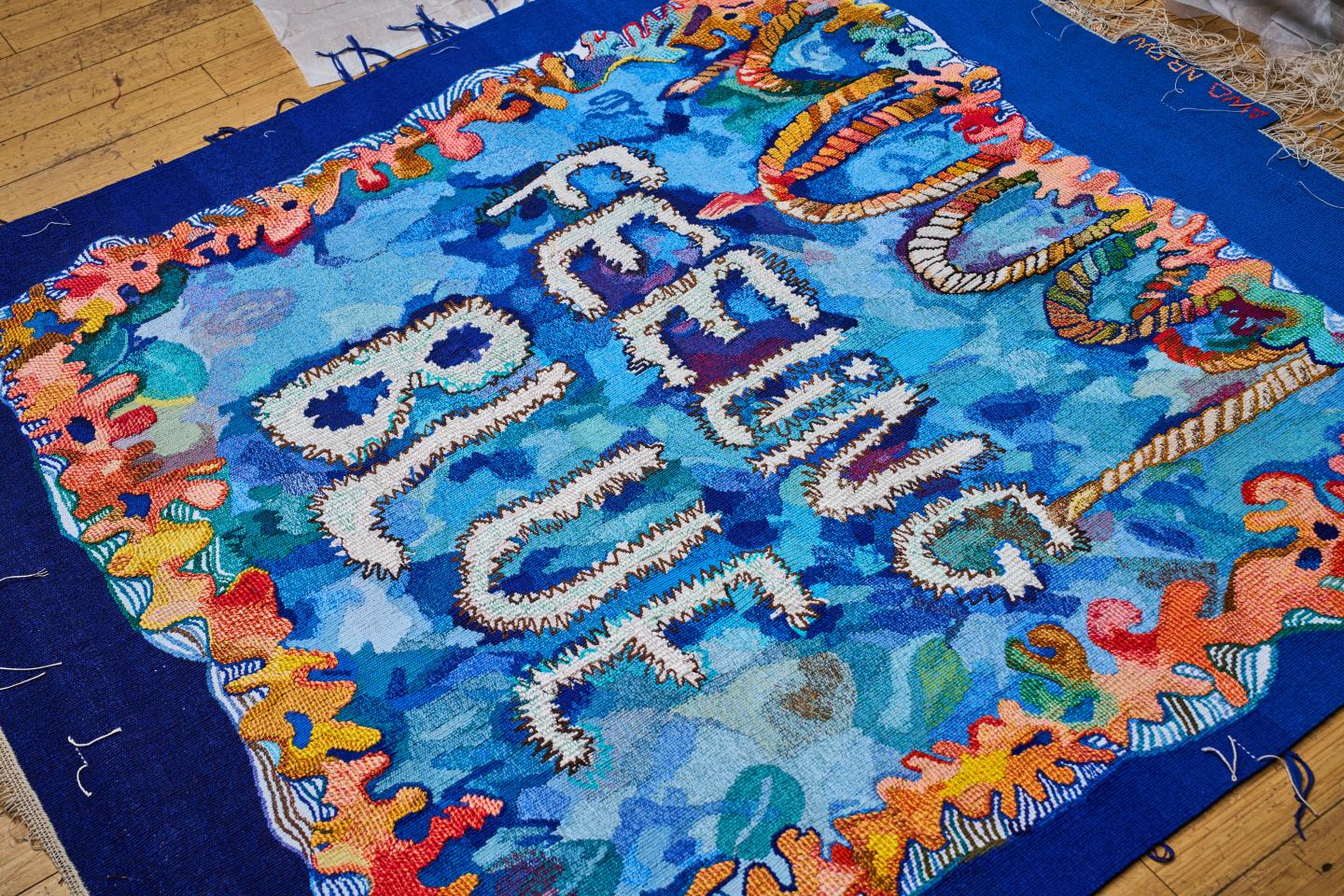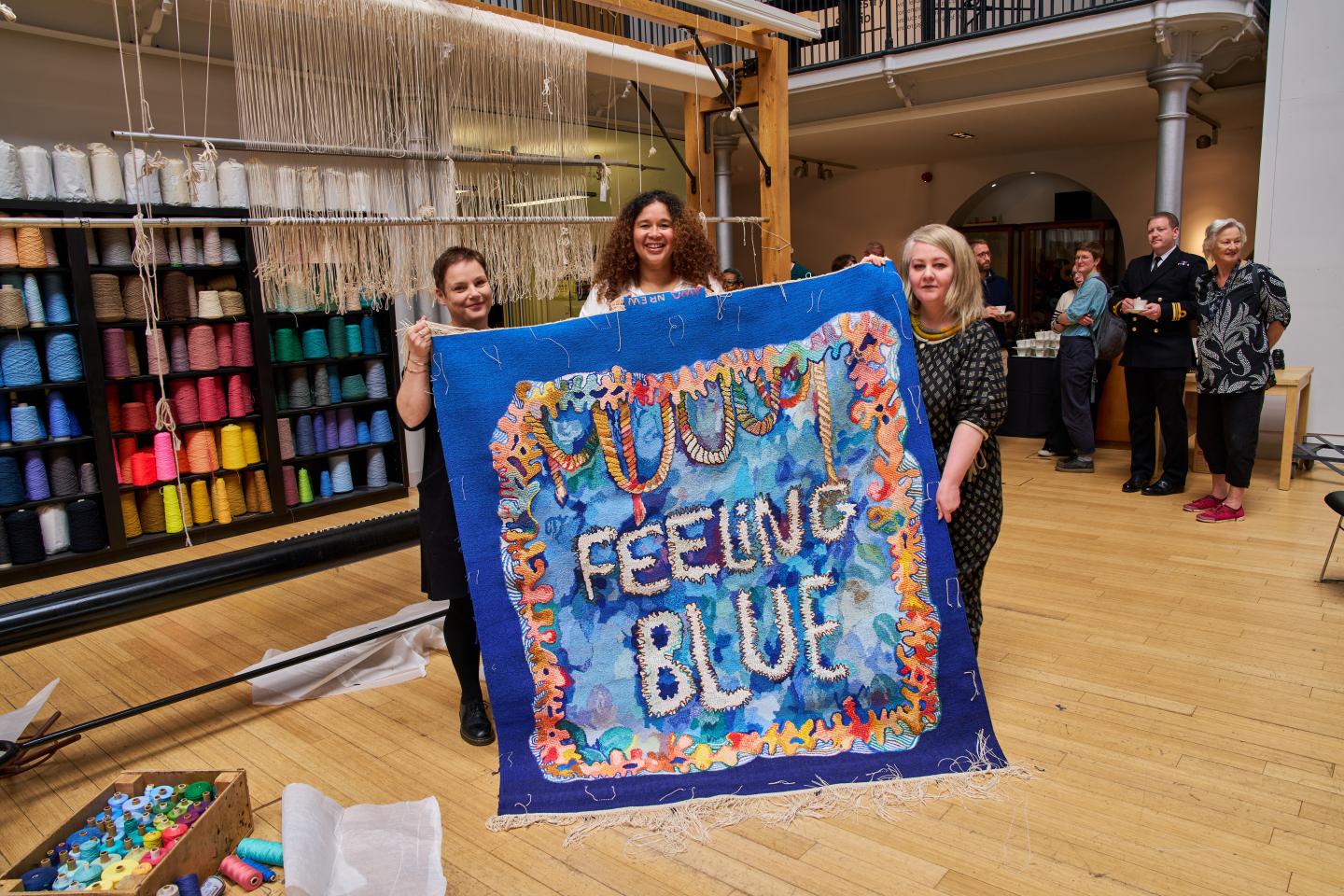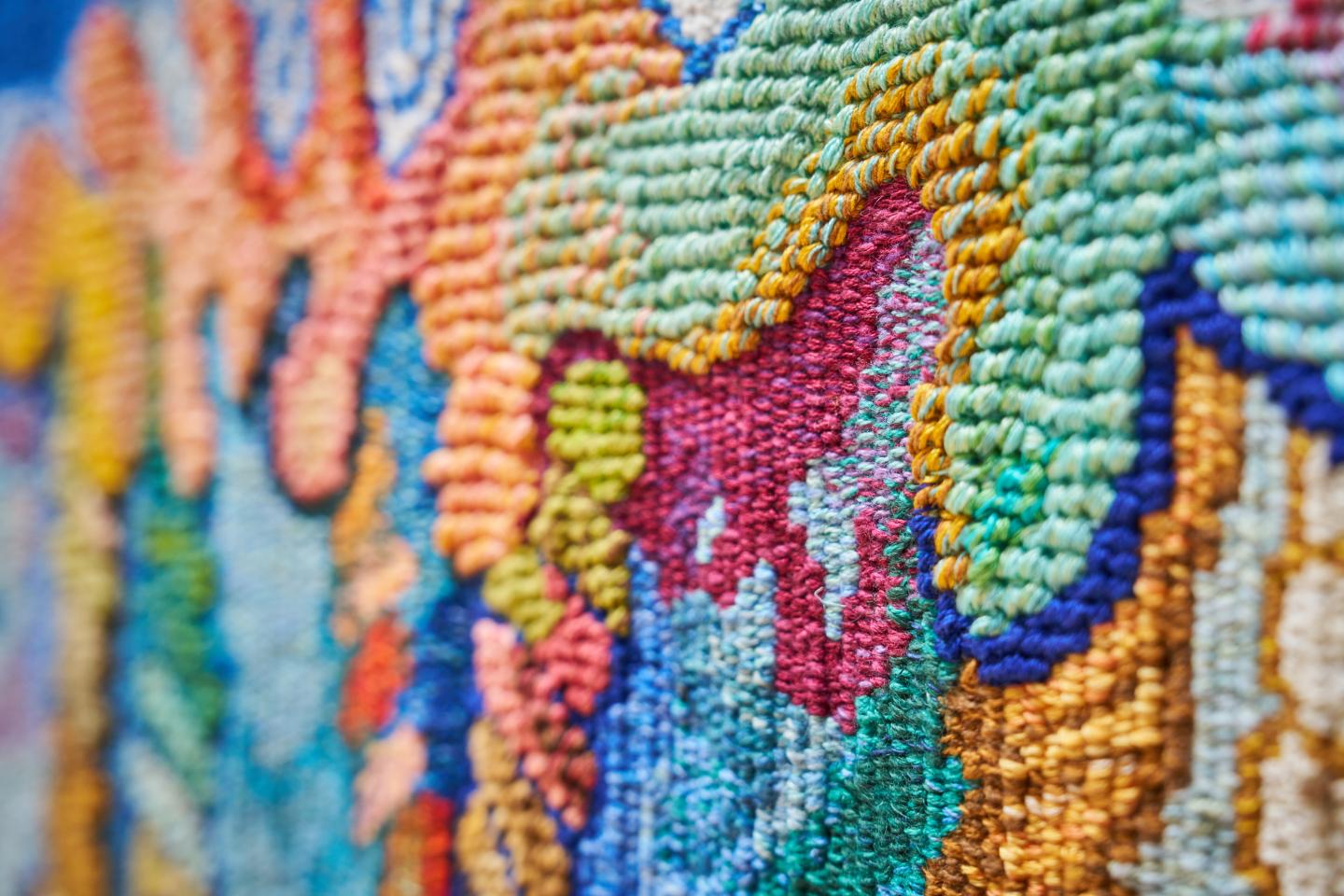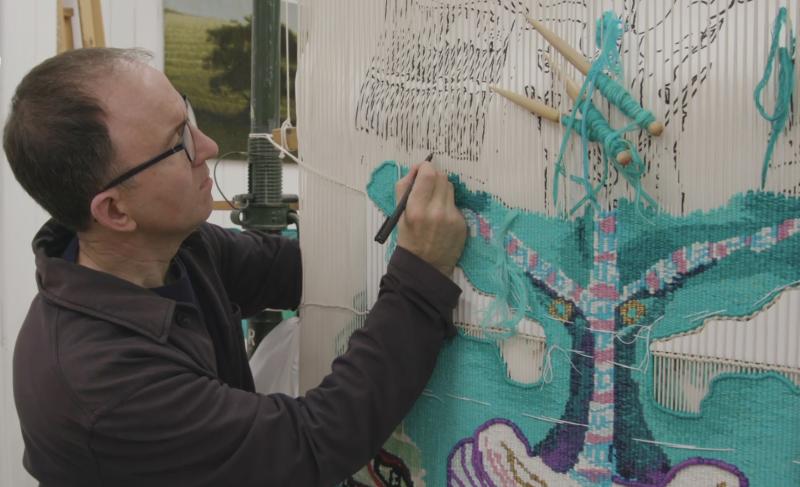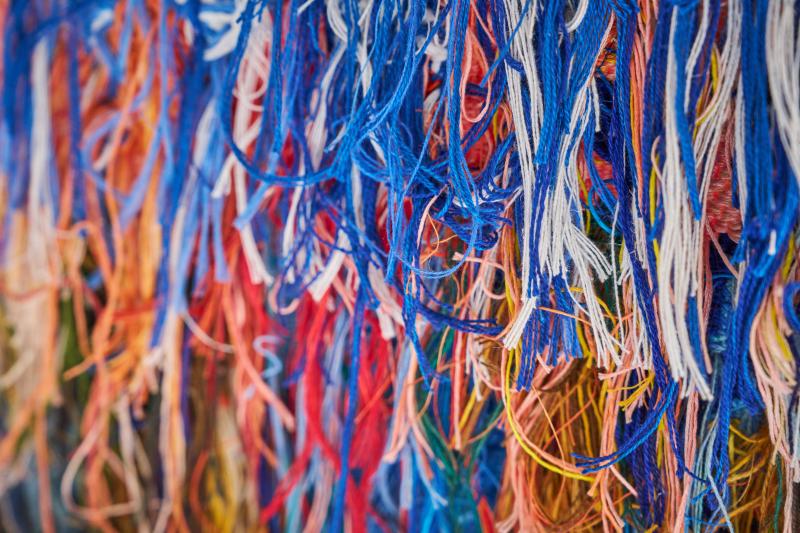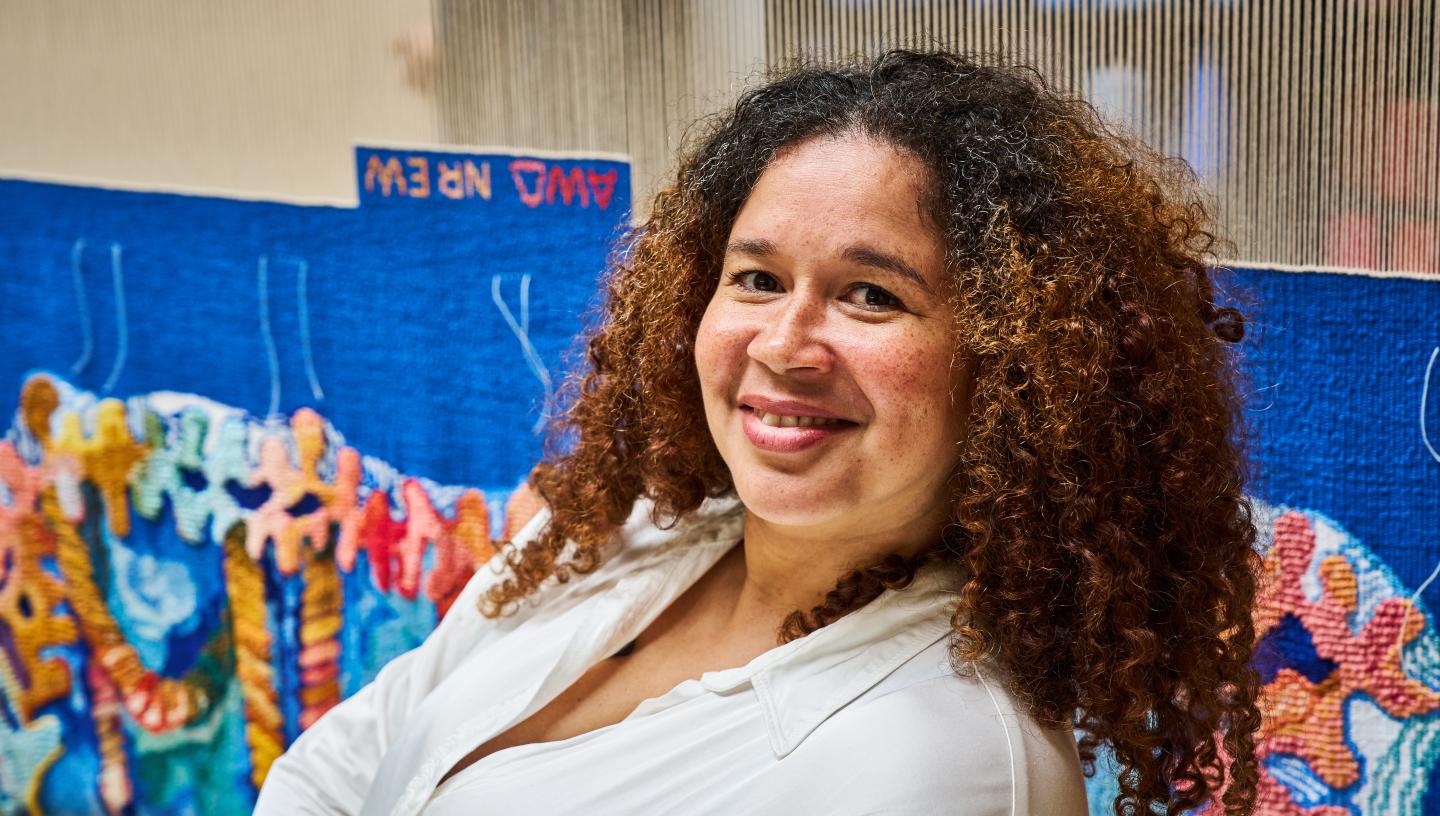
“So much of my work is about water: the stories water can tell you, and the stories that are hidden below the surface,” says artist Alberta Whittle.
Those hidden depths are key to the Scottish-Barbadian artist’s practice, which involves developing a personal response to the legacies of the Atlantic slave trade: unpicking its connections to institutional racism, white supremacy and climate emergency in the present.
Water works its way into Whittle’s art in other ways too. Her work ‘flows’ across different media, from drawing and sculpture to film, print and performance – and tapestry.
Whittle’s new artwork Feeling Blue has been commissioned by Royal Museums Greenwich and now hangs in the Queen’s House. The tapestry is a collaborative piece, woven in Edinburgh by Dovecot Studios and developed in response to the varied collections and complex histories of Greenwich.
From initial ideas to the creative process, Whittle reveals the story behind the artwork.
Where did the inspiration for Feeling Blue come from?
I wanted to situate the artwork within Greenwich’s nautical history, and I kept on thinking about water and the ‘wateriness’ of history. I wanted to find a phrase that encapsulated this fluidity, and which people would have a personal response to.
The title for the tapestry, ‘Feeling Blue’, is derived from a nautical saying of the same name. When sailors would pass away at sea, the crew would paint a blue band on the hull of the ship or wear some kind of blue. This idea of grief and ‘the blues’ became synonymous.
The phrase also has links to musical traditions and techniques, such as jazz, the blues, improvisation and call and response. It invites us to think about how collections speak to us as audience members – and how artworks talk to each other.
It suggests diaspora and people moving: whether by forced migration during enslavement, or voluntary migration.
How did the tapestry come together?
Feeling Blue has been shaped by the conversations I’ve had with the team members from Greenwich, and the incredible folk from Dovecot Studios. It’s been a really collaborative project.
My artwork has always been more sculptural, more lens-based media, so thinking about how design or image translates into tapestry has been a very different process for me. It requires an enormous amount of trust and give and take.
I used watercolours to work up the initial design. I find this medium creates such wonderful moments of looseness in my paintings, which are resolved so beautifully when working in tapestry.
It was an absolute joy to work with Dovecot Studios, including Naomi Robertson, Elaine Wilson, Emma Jo Webster and Ben Hymers. Whether discussing the aesthetics, techniques or materials, the team encouraged me to embrace the fullness of the form.
Discover more great art
Sign up to the art newsletter for more information about Royal Museums Greenwich's art collection, and learn about upcoming exhibitions and events.
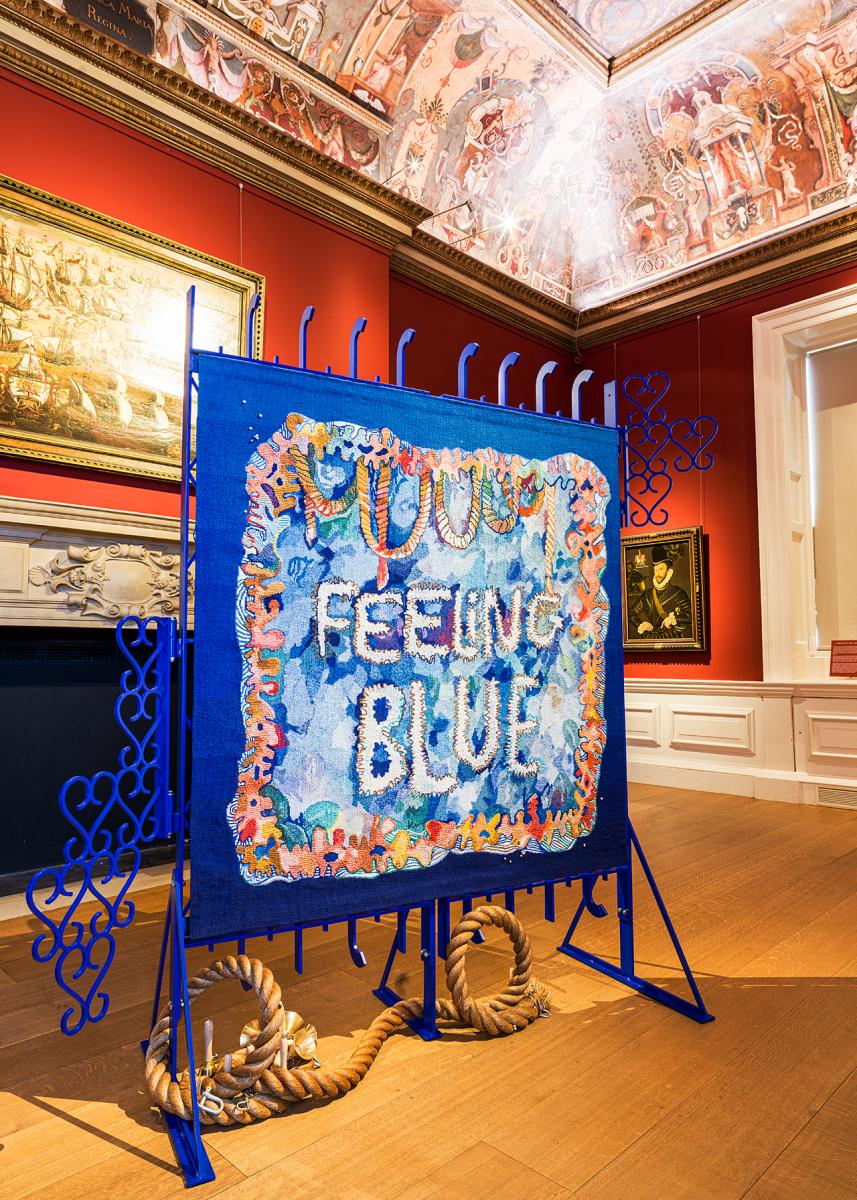
How did Royal Museums Greenwich’s sites and collections influence the tapestry’s design?
Certain paintings and objects really stood out to me on my visits to Greenwich. It was very special to wander around the sites and think about where the tapestry is going to fit – where it is going to situate itself within this history and all the different art objects.
I then started to think about the Queen’s House as a space for creation, a space for thinking about hierarchies of class, wealth, and of who is deserving of being memorialised. It seemed ideal to situate the tapestry within this site.
The Queen’s Presence Chamber really resonated with me. It’s the seat of power, of boundaries – of who is and isn’t allowed to be with the Queen in this private space.
The paintings in the chamber were fascinating: the Armada Portrait of Queen Elizabeth I, where the Queen wears a garment rigorously embellished with pearls, and the portrait of Sir Francis Drake wearing the huge ‘Drake Jewel’.
When I was creating the design, I wanted to start thinking about how the Museum’s collections can speak of what is going on in the world today. Feeling Blue incorporates cultured freshwater pearl beads and ropes into the design, but it also features images of brightly coloured coral inspired by the Museum’s displays. I wanted the work to address climate change, and how that has affected ecosystems.
These nautical images are around the edge of the tapestry’s phrasing, like the strong borders seen in mythological paintings. The design brings together these different ideas or imagery that would be taken from watery scenes, but also from the ships that sailed upon them.
Feeling Blue is displayed in the Queen’s Presence Chamber on powder coated steel gates made by Glasgow Sculpture Studios. It’s almost an intervention; something which a visitor is encouraged to encounter directly. The tapestry speaks of the accumulated grief of empire, standing in opposition to the portraits of Queen Elizabeth I and Sir Francis Drake: figures who are directly responsible for creating that engine of empire and for keeping it going.
So much of Feeling Blue has been about conversations, and the histories and stories we’re trying to tell – all of which have fed into the tapestry to make a very rich story.
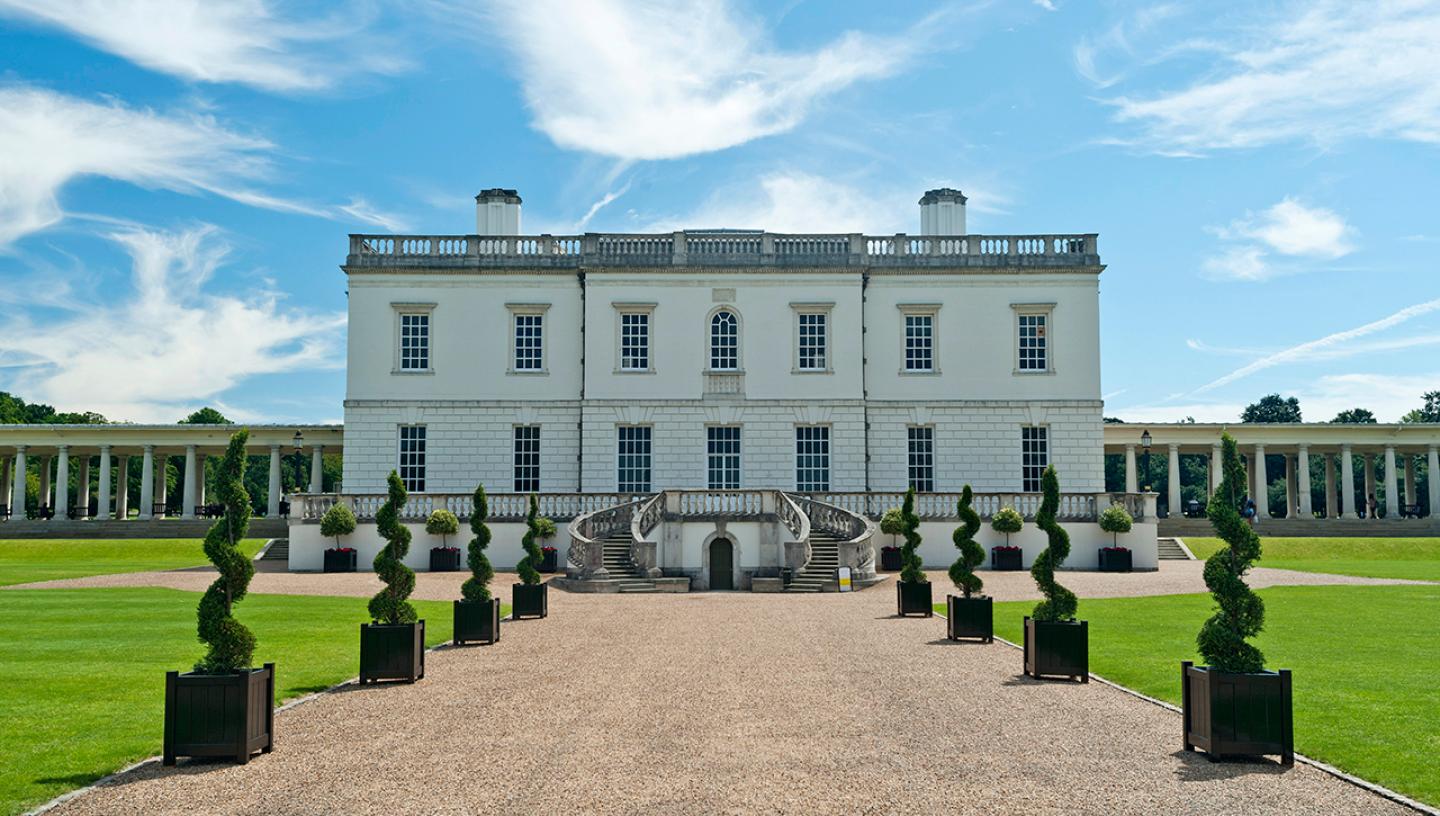
Visit the Queen's House
Credits
Feeling Blue
Tapestry by Dovecot Studios
2023, cotton, linen, synthetic yarn, cultured freshwater pearl beads
Tapestry woven for Dovecot by Naomi Robertson, Master Weaver, and Elaine Wilson
Displayed on powder coated steel gates made by Glasgow Sculpture Studios installed with bells, shackles, rope, wire and cultured freshwater pearl beads
ZBA9711 | Purchased with assistance from the Contemporary Art Society
Image credits: Artwork: © Alberta Whittle and Dovecot Studios. Photos: © National Maritime Museum, Greenwich, London

